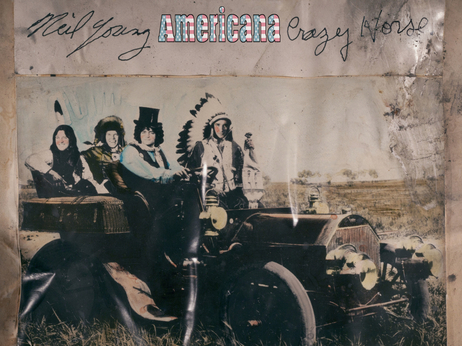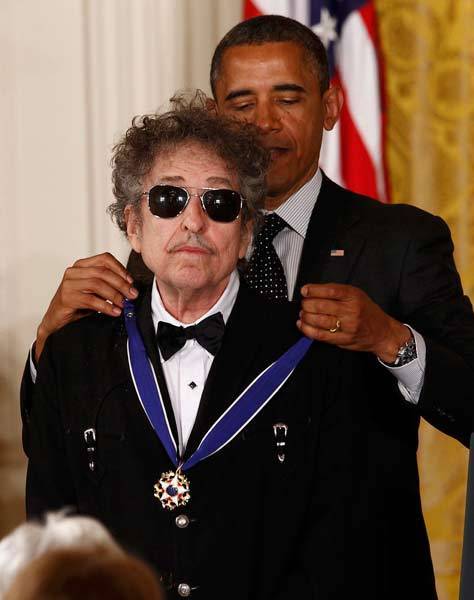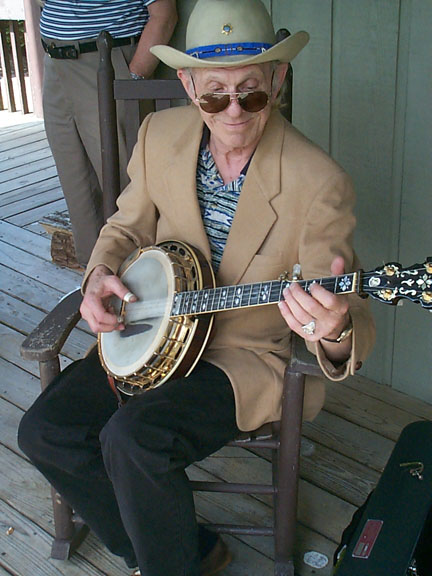“There is not a bigger giant in the history of American music”
– Barack Obama
All posts by Hallgeir
Mick Jagger with Arcade Fire, Foo Fighters and Jeff Beck

Mick Jagger was joined by Win Butler & Co. to perform a new version of the Rolling Stones’ 1965 hit “The Last Time.” on Saturday Night Live last Saturday. Then he was joined by The Foo Fighters for “19th Nervous Breakdown” and “It’s Only Rock ‘n Roll (But I Like It).” Last he did a new song: “Tea Party” about the precidential Election Campaign featuring Jeff Beck leading his group to back up Mick Jagger as he sings about how he sees this year’s Romney-Obama battle at the polls.
The Last time w/Arcade Fire:
With The Foo Fighters, a medley consisting of 19th nervous breakdown and It’s only rock’n roll:

Mick Jagger & Jeff Beck, Tea Party:
– Hallgeir
Video premiere: Clementine by Neil Young & Crazy Horse
photo: Pegi Young
Via Spinner.com:
For Americana, Neil Young’s first album with the band Crazy Horse in nearly nine years, the singer-songwriter revisits classic American folk songs and delivers the tunes, which encompass familiar protest songs, murder ballads and campfire songs, with electrifying ferocity. In spite of — or perhaps because of the approach, the universal appeal of the songs is neither lost nor diminished and they retain their relevance in these challenging times.
Wikipedia says of the history of the song:
The words are those of a bereaved lover singing about his darling, the daughter of a miner in the 1849 California Gold Rush. He loses her in a drowning accident, though he consoles himself towards the end of the song with Clementine’s “little sister”.
The verse about the little sister was often left out of folk song books intended for children, presumably because it seemed morally questionable.
Another theory is that the song is from the view of Clementine’s father, and not a lover.
Gerald Brenan attributes the melody to originally being an old Spanish ballad in his book South from Granada. It was made popular by Mexican miners during the Gold Rush. It was also given various English texts. No particular source is cited to verify that the song he used to hear in the 1920s in a remote Spanish village was not an old text with new music, but Brenan states in his preface that all facts mentioned in the book have been checked reasonably well. The song is using the melody placed on Romances, in particular the one of Romance del Conde Olinos o Niño, a sad love story very popular in the Spanish folk some of which were compiled at the court of Alfonso X and others like the Cancionero de Uppsala later by the House of Trastamara.
It is unclear when, where and by whom the song was first recorded in English for others to hear.
The video for “Clementine” as for all of the clips produced for Americana is authentic found footage, adding a unique visual element to a project steeped in America’s rich, lyrical history.
Clementine:
Neil Young:
“The Americana arrangement extends the folk process using many of the original words and a new melody. The song tells the story of either a bereaved lover recalling his lost sweetheart, or a father missing his lost daughter. In both cases the daughter has drowned in an accident. The verse about Clementine’s sister has been omitted from most children’s versions. This verse has different meanings depending on whether the point of view of the singer is taken as the lover or the father.”
– Hallgeir
Doug Dillard bluegrass legend dies at 75
Doug Dillard (born March 6, 1937, died May 16, 2012), brother of Rodney Dillard and a band member of The Dillards, was the banjo-playing brother of the The Darling Boys on The Andy Griffith Show. He appeared in the films The Rose and Popeye and in the TV movie Return to Mayberry. He also wrote the songs “Doug’s Tune” and “Banjo in the Hollow”.
Hickory Holler:
Duelin Banjos:
By Stephen L. Betts
Banjo player and TV performer Doug Dillard, who gained fame for his appearances on “The Andy Griffith Show” with musical group the Dillards (known on the TV series as the “Darlings”) has died following a lengthy illness. A family spokesperson tells The Boot that Dillard was taken to a Nashville emergency room on Wednesday night (May 16) and died shortly thereafter.
Doug Dillard was born in Salem, Mo., in 1937 and was playing guitar by age 5. He received his first banjo as a teenager and soon began performing with various bands on radio and TV. He had been encouraged to pursue his instrument by banjo legend Earl Scruggs. According to his official bio, at 16, Dillard wrote a letter to Scruggs and received a positive reply. He then pestered his parents into driving him to Scruggs’ home in Madison, Tenn., some five hundred miles away from Salem. Doug brazenly walked up to the front door and rang the bell, introducing himself and asking the iconic banjo picker to install Scruggs’ tuners on his banjo.
Along with his brother Rodney, Doug soon formed the Dillards. Their folk-bluegrass blend became popular on college campuses and elsewhere, which led to their move to California and resulted in a recording contract and their stint on the hit CBS series starring Andy Griffith. After parting ways with the Dillards, Doug joined folk-rock group the Byrds on their first European tour. After the tour, Doug teamed up with former Byrds member Gene Clark, forming the influential Dillard & Clark, one of the first acts to popularize the country-rock sound that would include other artists such as Gram Parsons and the musicians who would later form the Eagles. Comedian and banjo player Steve Martin recently told The Boot that Doug Dillard was among the first influences on his banjo playing.
Train Leaves Here This Morning & This Plan (audio):
Rest in peace Doug Dillard.
– Hallgeir
Video premiere: Jesus’ Chariot (she’ll be coming round the mountain) – Neil Young & Crazy Horse

From NPR:
You’ve never heard “She’ll Be Coming Round the Mountain” quite like this. For their first album together in nine years, Neil Young and Crazy Horse have taken classic American folk music and reinvigorated these songs with muscle, radiance and a whole lot of electric guitar.
head over to their website and read more
This song, as with all the songs on the record, have been paired up with archival footage. This footage is from an early scene in D.W. Griffith’s controversial 1915 film Birth of a Nation, in which the Southern Cameron family hosts a farewell ball for soldiers fighting for the Confederacy.
As for the song itself, Neil Young writes in the liner notes toAmericana:
Written in the 1800s based on an old Negro spiritual, this song refers to the second coming of Jesus, and “she” is the chariot Jesus is coming on. Some interpret this as the end of the world. Others have said that “she” refers to union organizer Mary Harris “Mother” Jones going to promote formation of labor unions in the Appalachian coal-mining camps. The Americana arrangement continues the folk process with a new melody, a new title and a combination of lyric sources.
– Hallgeir



